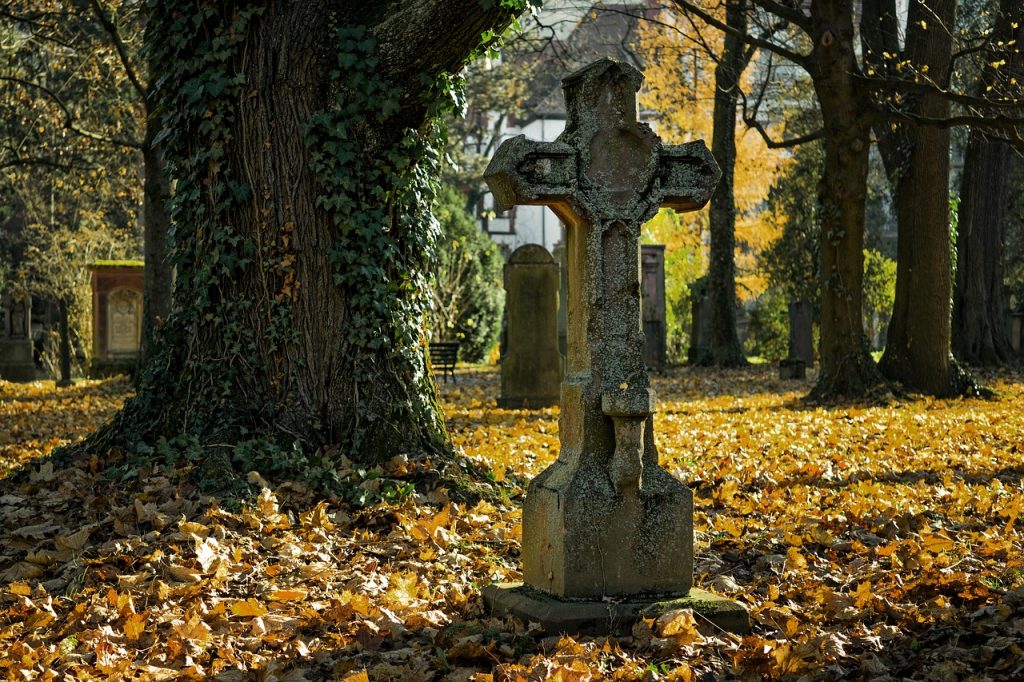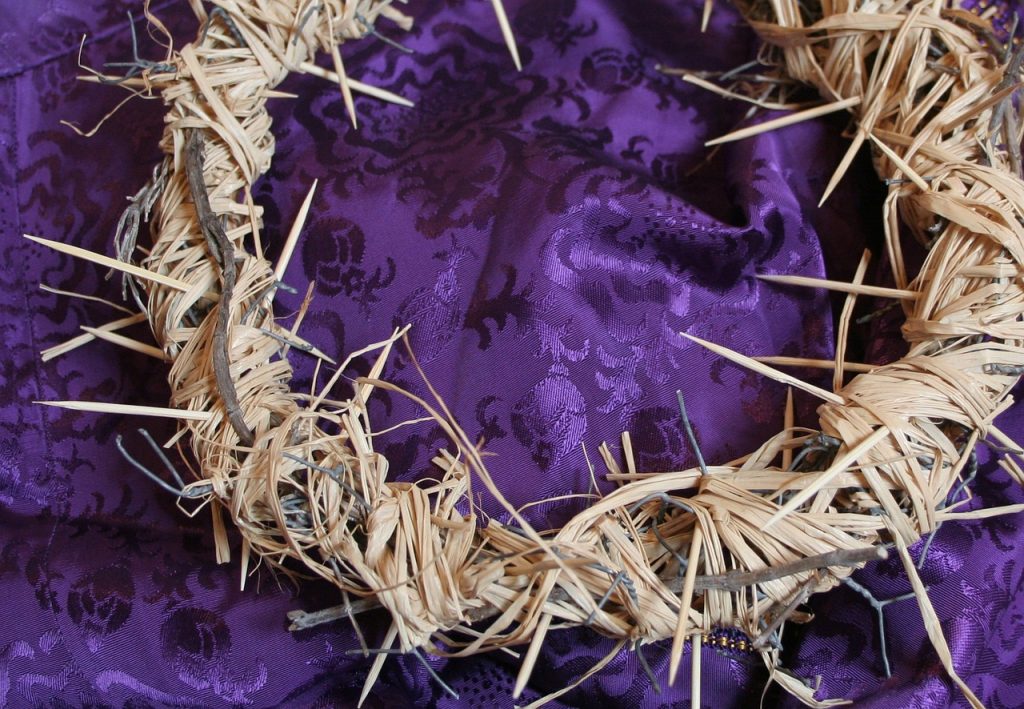So when Pilate saw that he could do nothing, but rather that a riot was beginning, he released Barabbas for them; and after flogging Jesus, he handed him over to be crucified. Then the soldiers of the governor took Jesus into the governor’s headquarters, and they gathered the whole cohort around him. They stripped him and put a scarlet robe on him, and after twisting some thorns into a crown, they put it on his head. They put a reed in his right hand and knelt before him and mocked him, saying, ‘Hail, King of the Jews!’ They spat on him, and took the reed and struck him on the head. After mocking him, they stripped him of the robe and put his own clothes on him. Then they led him away to crucify him.
You might like to imagine the city of Jerusalem – quite small at the time, inside high limestone walls on the top of the hill above the Jordan valley, across the little Kidron valley from Gethsemane and its olive trees.
A Special Passover is about to start, at sunset Friday. A Friday sunset sabbath was unusual, and always regarded as an extra special celebration of the liberation of the Jews from Egypt. Estimates vary wildly from 50000 to 250000 people – men and families gathered together – remembering God’s promises of freedom, God’s actions to liberate and free from Egypt with Moses, Joshua / Jeshua leading them into their promised land at Jericho way down below them, and their actual servitude under the Romans. When will Messiah come? When will God actually be with us here in his city? When will we be free? When will God hear our prayers?
Pilate and his troops, up for Passover from their usual base by the sea in what we know as Tel Aviv. In the Roman fortification adjacent to the Temple, with high stone towers built to look inside the Temple precincts and watch for trouble.
Pilate, as often dithering, asks the crowd whom they want freed – they go for Jeshua Barabbas – already proven as a potential liberator, a terrorist leader. But they reject Jeshua from Nazareth and he is flogged then handed over to the whole cohort of around 450 troops to mock.
Knowing that he has been hailed by some as Messiah, or Christ, they produce a purple robe and a reed – think staff of authority – and a crown woven from thorns. Those in high authority were anointed and allowed to wear purple. The colour was produced by a slow and painstaking process of crushing some specific sea snail shells by hand then drying their goo in the sun and then powdering the resulting purple mess. So it was very expensive and a sign of power and authority – still is – that’s why Bishops wear it.
In the eyes of the edgy, hyped up, hugely outnumbered soldiers they were taking out their anger and fear on this peasant from the Northern borders, whom some of these locals had said was some sort of anointed one. But now he was rejected and heading for an agonising death. With typical Roman military brutality they took it out on him.
And there, in the middle of it all, is Jesus.
Mocked by the troops as a failed king, his flogged back bleeding in a purple robe, rejected as a revolutionary leader by the baying crowd.
Jesus in his purple robe – who is he for you?
– Alastair Wheeler





